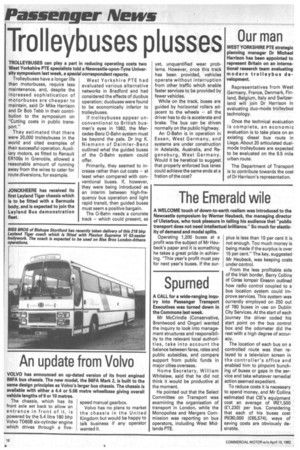The Emerald wile
Page 12

If you've noticed an error in this article please click here to report it so we can fix it.
A WELCOME touch of down-to-earth realism was introduced to the Newcastle symposium by Werner Heubeck, the managing director of Ulsterbus, who took pleasure in telling his audience that "public transport does not need intellectual brilliance." So much for elasticity of demand and modal splits.
Operating 1,200 buses at a profit was the subject of Mr Heubeck's paper and it is something he takes a great pride in achieving. "This year's profit must pay for next year's buses. If the sur plus is less than 10 per cent it is not enough. Too much money is being made if the surplus is over 15 per cent." The key, suggested Mr Heubeck, was keeping costs under control.
From the less profitable side of the Irish border, Barry Collins of Coras lompair Eireann outlined how radio control coupled to a bus location system could improve services. This system was currently employed on 250 out of 780 buses in use on Dublin City Services. At the start of each journey the driver coded his start point on the bus control box and the odometer did the rest with a high degree of accuracy.
The location of each bus on a controlled route was then relayed to a television screen in the controller's office and enabled him to pinpoint bunching of buses or gaps in the service and take whatever remedial action seemed expedient.
To reduce costs it is necessary to spend money, and Mr Collins estimated that CIE's equipment cost an average of 1R£1,500 (£1,230) per bus. Considering that each of his buses cost IR£80,000 (C65,574), ways of saving costs are obviously desirable.




















































